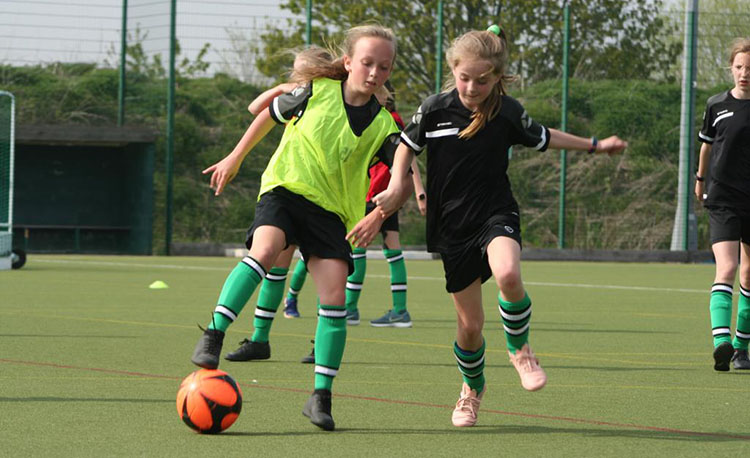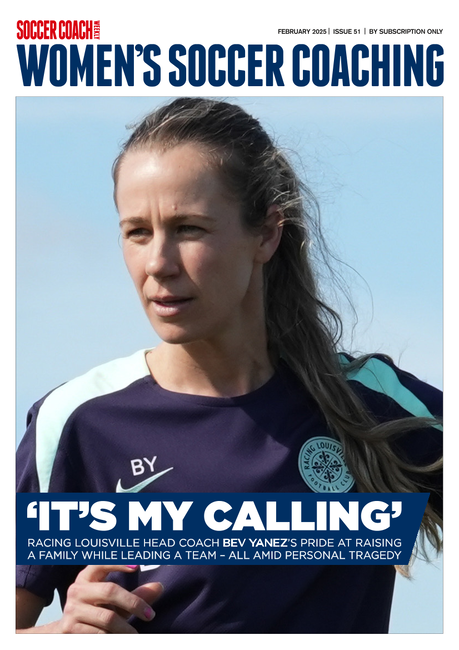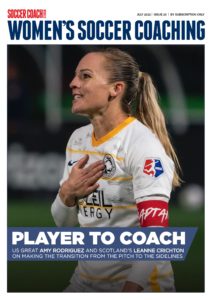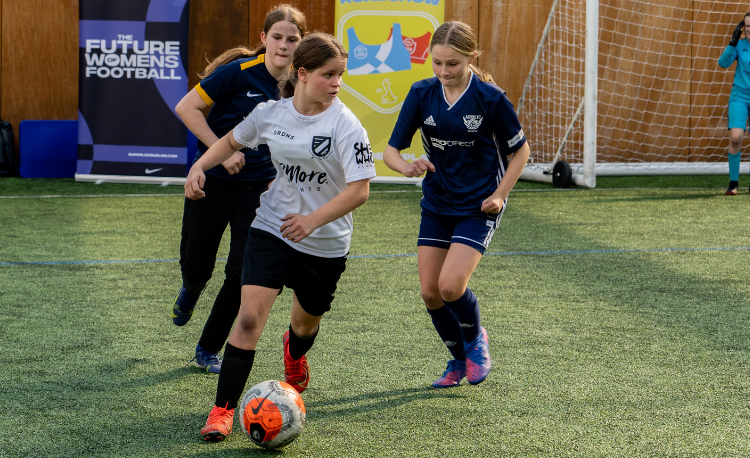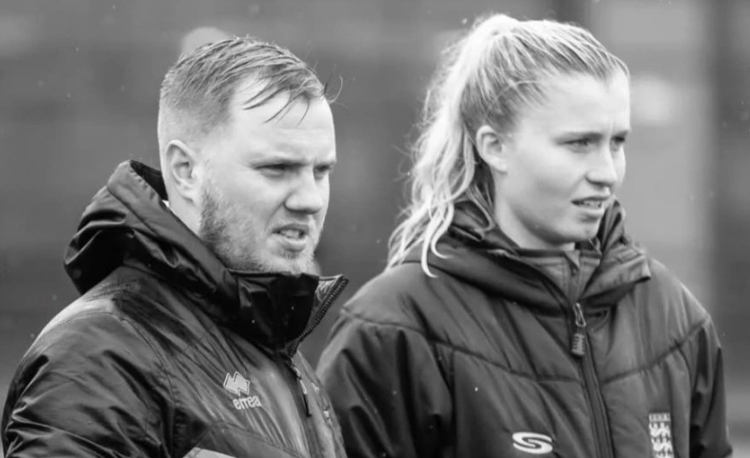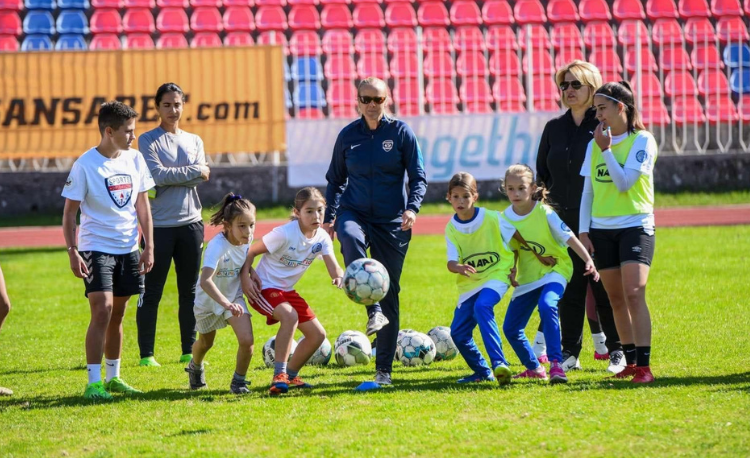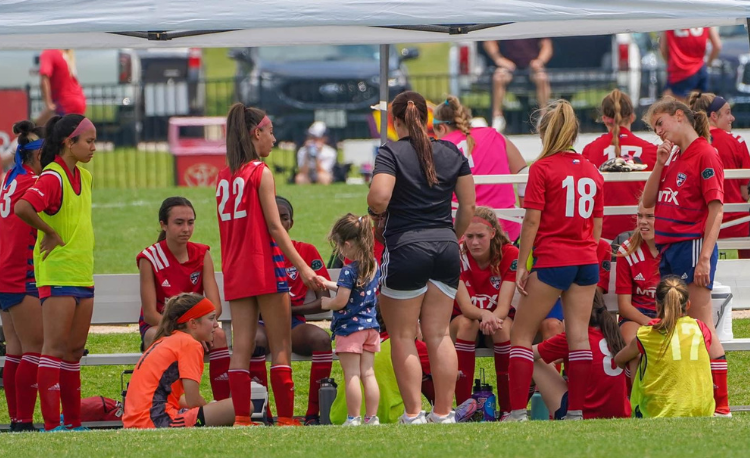You are viewing
1 of your 3 free articles
How can we get girls to stay on the ball?
It’s a key skill that tends to be favoured more by boys. HANNAH DUNCAN asks three senior coaches about promoting individual expression in the female game
It is a skill learned in playgrounds, parks and streets across the world from an early age.
Without the demands of coaches, parents or crowds, the future superstars of our game express their burgeoning creativity, resisting pressure and leaving defenders trailing, while staying on the ball.
It is this structure-free, stress-free environment that breeds technical talent, like Lionel Messi, Mohamed Salah, Eden Hazard, Diego Maradona or George Best, for whom the ball is, or was, a toy at any age.
But this individuality is seen less often in the women’s game, which, to generalise a moment, tends to prioritise team play to shift the ball closer to goal.
Staying on the ball is a skill which has shot to the forefront of coaching methods and philosophies in recent years, particularly within the foundation phase (ages 5-11).
It is then when players are learning to love the ball and gain confidence in possession. Surely boys and girls enjoy this in equal measure?
Some coaches in the female game concede it is a skill more easily picked up by boys.
England Lionesses talent ID scout Andrew Aspinall said: “When I worked at Blackburn Rovers girls, it used to take me around a month to persuade a new girl to stay on the ball and take players on.
“Considering we trained for two hours on a Monday and two hours on a Wednesday, it would take 16-20 hours potentially, constantly drumming the message into them. “With boys it is much easier. I can get the message across to 80 per cent of boys probably within a one-hour session.
“Most of the time, they come into one of my sessions with the ability to stay on the ball and take players on, and with the confidence to do so.
“A lot of boys also still play street or playground football, with no parents and no structure, which allows them to stay on the ball, take players on and be skilful.
“But girls’ street football barely exists, so there isn’t really an environment to allow girls to develop this brand of football.”
Caroline Ames, coach at Sunderland’s RTC (Regional Talent Centre), says the problem is accentuated by the role models boys and girls seek out.
She said: “I think the biggest reason for the difference in attitude could be that boys tend to watch more football than girls, so are keen to copy the exciting players.
“I’ve found that girls who are less experienced playing football panic a little bit and just want to ‘get rid of it’.
“Girls’ street football barely exists to develop this brand of football...”
Andrew Aspinall
“This then leads to trying to create an environment in training sessions to ensure that when it comes to matches, they will be more comfortable on the ball.”
Martin Dighton, an FA tutor and head coach at the Dorset Girls’ Advanced Coaching Centre, helped create the England DNA for the foundation phase in 2015.
He believes the differences are more deep- rooted in both psychology and society.
“Generally, in society, boys are encouraged to play football far earlier than girls are, perhaps meaning girls often miss football in the ego-centric time of their life,” he said.
“We are still in a world where girls are encouraged to play differently to boys – to play ‘nicely’ and in calmer environments – while being competitive is discouraged in girls and encouraged in boys.
“There is also some suggestion that boys are generally more ego-centric than girls at similar ages and therefore you may expect boys to be more comfortable with the notion of ‘keeping’ the ball than girls.
“It is also thought that girls start to consider the ‘we over me’ earlier than boys, so they may be keener to feed the needs of the group rather than their own first.”
Coaches who have been through the old standalone FA Youth Modules or the more recent FA Level 1 and 2 courses, will likely be well versed in the England DNA.
Part of this says the foundation phase is a crucial time for teaching young players to love the ball.
One of the key in-possession priorities for this age group is ‘stay on the ball, master the ball’, followed by ‘excite with the ball and seek creative solutions’.
It is no fluke that these are listed ahead of the third priority – ‘connect and combine creatively with others’.
Related Files
Dighton added: “First and foremost, children need to fall in love with playing football. Only then will they stay playing the game into their teens and adulthood.
“In my experience, the bit children love most is having a ball at their feet. When children feel a degree of competence at something, they will feel a sense of confidence too; this confidence is what encourages them to stick at a task and enjoy the process of learning.
“Affording children opportunities to ‘stay on the ball’, to become truly comfortable with a ball, helps them to love the game and continue playing it for years to come.”
It is clear that for young players, at the earliest stages in their development in particular, time on the ball is vital, to grow confidence and discover new skills.
If this competence and confidence isn’t embedded at a young age, it can become increasingly difficult to encourage players to stay on the ball as they move into the youth development phase (ages 12-16) and beyond.
The England DNA encourages staying on the ball. Coaching courses promote this too. Yet, clearly, more needs to be done to develop this aspect of girls’ games.
“Personally, I think it’s about empowering the players and constantly re-enforcing that if you don’t try something then you will never improve with it,” said Ames.
“I always try to create situations within training sessions that challenge players, but which are tailored to the different success levels for each individual.
“It’s really important to remember that each individual will be comfortable in different areas of the pitch when it comes to staying on the ball. It is not something that can be forced.
“Allowing each player to work out the moments in a game they want to do this is important, especially if it is new to them.”
“Children need to fall in love with playing football...”
FA tutor Martin Dighton
Off the pitch, Aspinall calls on the soccer authorities and clubs to lead the way and facilitate change.
“More education is required for those who coach in girls’ and foundation-phase football to follow the England DNA and allow younger players to stay on the ball,” he said.
“Funding from the FA, Premier League or professional clubs can be used to provide foundation-phase expert full-time roles.
“We also need parent workshops to explain the England DNA so they understand their child will be asked to stay on the ball.”
But for Dighton, the work to develop confidence within girls to stay on the ball extends beyond the game itself. “It’s time to change some social customs in which we bring children up,” he said.
“Why are some children pushed into sport earlier than others? Why is competition encouraged in some children but not others? Why are some children more willing to stay on the ball than others?
“It also requires role models. The more young girls that come into contact with a coach or adult who values staying on the ball the better.
“This may be a female or male coach, but the key elements are that they can relate to the child, understand their background and experiences, and recognise the stage of development they are in at that time.
“Then we have a chance of helping more children love the ball and love the game.”
Newsletter Sign Up
Newsletter Sign Up
Discover the simple way to become a more effective, more successful soccer coach
In a recent survey 89% of subscribers said Women's Soccer Coaching makes them more confident, 91% said Women's Soccer Coaching makes them a more effective coach and 93% said Women's Soccer Coaching makes them more inspired.
*includes 3 coaching manuals
Get Inspired
All the latest techniques and approaches
Women's Soccer Coaching offers proven and easy to use soccer drills, coaching sessions, practice plans, small-sided games, warm-ups, training tips and advice.
We've been at the cutting edge of soccer coaching since we launched Soccer Coach Weekly in 2007, creating resources for the grassroots youth coach, following best practice from around the world and insights from the professional game.
